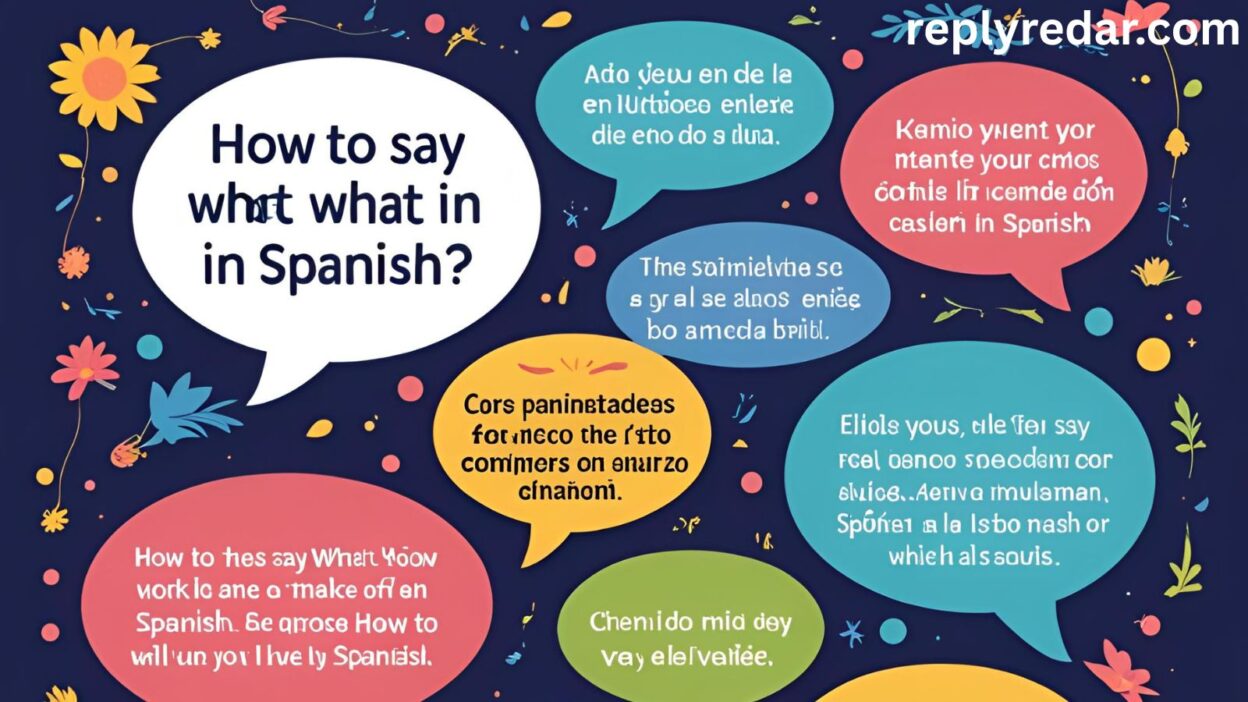Have you ever been in a conversation where you’re grasping for the right word, but it just won’t come? Imagine traveling in Spain or chatting with a Spanish-speaking friend, and suddenly, you need to ask, “What?” It’s a small word, but it’s a big deal in communication! Learning how to say what in Spanish opens doors to clearer conversations and deeper connections.
Whether you’re a beginner or brushing up on your skills, this guide will teach you the ins and outs of saying “what” in Spanish, with practical tips and real-life examples.
By the end, you’ll feel confident using this word in any situation, from casual chats to formal settings. Let’s dive in and make Spanish conversations a breeze!
Why “What” Matters in Spanish Conversations
The word “what” is a key part of asking questions and showing curiosity. In Spanish, “qué” is the most common translation, but it’s not the only one. Using it correctly helps you sound natural and engaged. For example, imagine you’re at a bustling market in Mexico, and a vendor offers you a dish you don’t recognize. Saying “¿Qué es esto?” (What is this?) shows interest and starts a conversation.
On the flip side, saying something like “¿Cómo?” (How?) might confuse the vendor, as it’s not the right word. Practice using “qué” in questions like “¿Qué quieres?” (What do you want?) to build confidence. Knowing when and how to say “what” makes you a better listener and speaker in Spanish.
Different Ways to Say “What” in Spanish
Spanish offers several ways to say “what,” depending on the context. The most common is “qué,” used in questions like “¿Qué hora es?” (What time is it?). But you might also hear “cuál” in situations like “¿Cuál es tu nombre?” (What is your name?), especially when choosing from options. Another variation is “cómo,” used in exclamations like “¡Cómo!” (What!) to express surprise.
Picture yourself at a café in Argentina. Your friend says something shocking, and you blurt out “¡Cómo!” to show disbelief. But if you’re asking about their order, you’d say “¿Qué pediste?” (What did you order?). Mixing these up can lead to funny misunderstandings, so pay attention to the situation.
When to Use “Qué” vs. “Cuál”
Choosing between “qué” and “cuál” can be tricky. Use “qué” for general questions about things or ideas, like “¿Qué es eso?” (What is that?). Use “cuál” when asking about specific choices, like “¿Cuál prefieres?” (Which one do you prefer?).
Imagine you’re shopping for souvenirs in Peru. You spot a colorful scarf and ask, “¿Qué es esto?” to learn about it. But if the vendor shows you three scarves, you’d say “¿Cuál es el mejor?” (Which is the best?). Using the wrong word might confuse the seller, so practice these differences to sound clear and polite.
Saying “What” in Polite or Formal Settings
In formal situations, tone and word choice matter. Instead of a blunt “¿Qué?” (What?), which can sound rude, try “¿Perdón, qué dijo?” (Sorry, what did you say?) or “¿Podría repetir, por favor?” (Could you repeat, please?). These phrases show respect and keep the conversation friendly.
Picture yourself at a business meeting in Chile. Your colleague says something unclear, and you need clarification. Saying “¿Perdón, qué dijo?” keeps things professional. But a sharp “¿Qué?” might seem impolite. Practice softer phrases to navigate formal settings with ease.
Common Mistakes to Avoid When Saying “What”
New Spanish learners often misuse “what” by relying only on “qué” or using English sentence structures. For example, saying “¿Qué es tu nombre?” instead of “¿Cuál es tu nombre?” is a common error. Another mistake is overusing “cómo” when “qué” is needed, like saying “¿Cómo es esto?” instead of “¿Qué es esto?”
Imagine you’re at a party in Spain and ask someone, “¿Qué es tu nombre?” They might still understand, but it sounds unnatural. Instead, use “¿Cuál es tu nombre?” to blend in. Pay attention to context and practice correct phrases to avoid these slip-ups.
Practicing “What” in Everyday Conversations
The best way to master how to say what in Spanish is through practice. Try using “qué” and “cuál” in daily chats, like asking a friend “¿Qué vas a hacer hoy?” (What are you doing today?) or “¿Cuál es tu película favorita?” (What’s your favorite movie?). You can also practice by listening to Spanish podcasts or watching shows and noting how native speakers use “what.”
Picture yourself at a language meetup. Someone mentions a new restaurant, and you ask, “¿Qué tipo de comida sirven?” (What kind of food do they serve?). This keeps the conversation flowing and builds your confidence. Practice makes perfect!
Final Thoughts
Learning how to say what in Spanish is a small but powerful step toward fluent conversations.
Whether you’re using “qué” to ask about something new, “cuál” to make choices, or polite phrases in formal settings, this word helps you connect with others. By understanding the differences, avoiding common mistakes, and practicing daily, you’ll soon use “what” like a native speaker.
So, next time you’re chatting with a Spanish-speaking friend or exploring a new culture, you’ll know exactly how to ask, “What?” with confidence. Keep practicing, and you’ll be amazed at how natural it feels!




